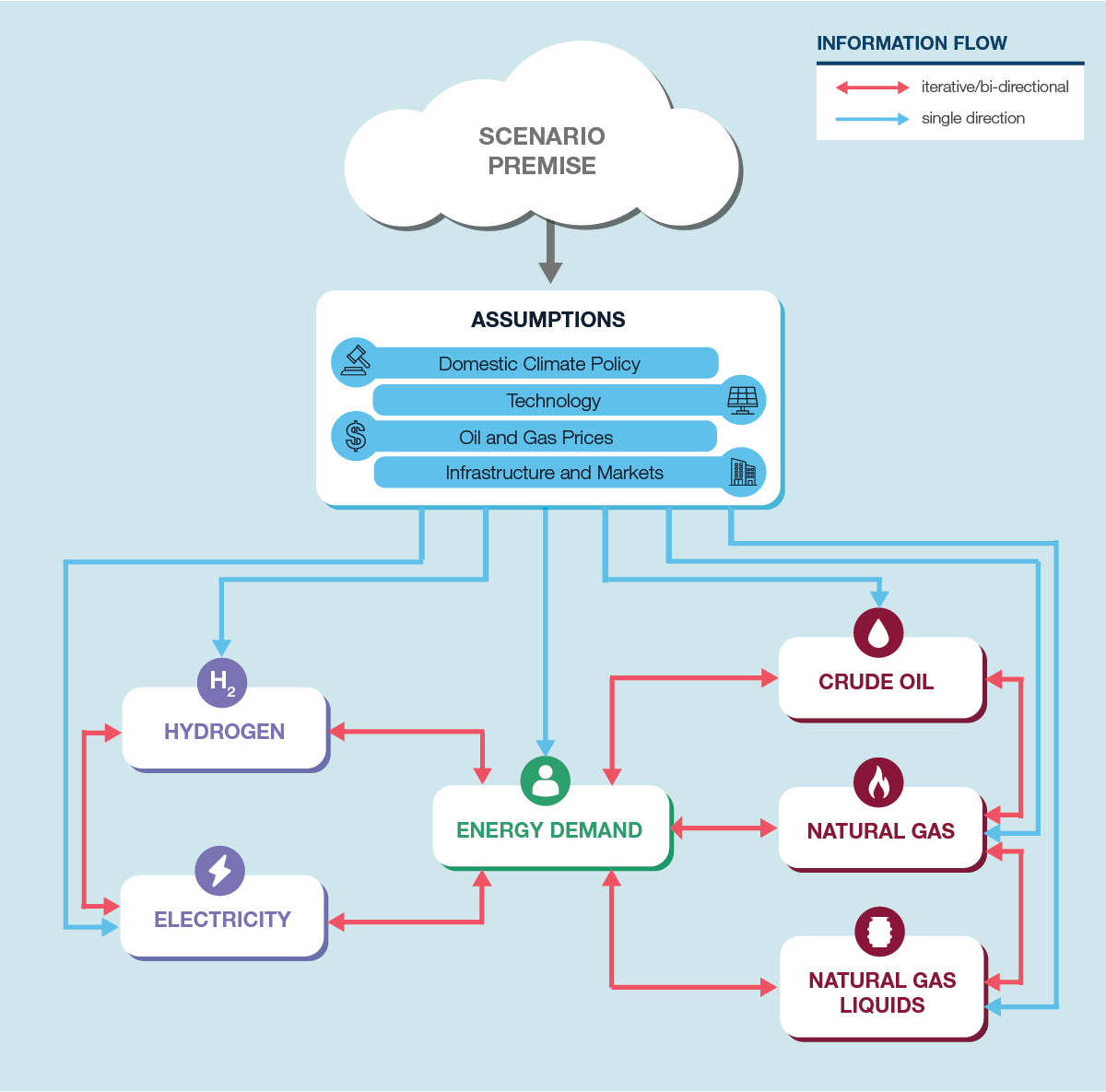
Energy Futures Modeling System overview
The Energy Futures Modeling System turns the assumptions chosen for each scenario into projections of Canadian energy supply and demand. The Energy Futures Modeling System is a collection of separate models (e.g., Energy Demand Model, Crude Oil Production Model) that draw upon the scenario assumptions. For example, the global oil price (an assumption) drives crude oil production in the Crude Oil Production Model, while also driving end-use gasoline and diesel prices in the Energy Demand Model. The models interact as outputs of one model can be key inputs for another model. For example, electricity demand projections from the Energy Demand Model influence the electricity capacity and generation projections in the Electricity Supply Model. Figure EFMS.1 illustrates the Energy Futures Modeling System as a whole.
Figure EFMS.1: Energy Futures Modelling System flow chart

Source and Description
Source: CER
Description: This flow diagram provides a simplified overview of the information flow in the Energy Futures Modeling System. It starts with a given Scenario Premise. The Scenario Premise is turned into assumptions about factors like domestic climate policy, technology, oil and gas prices, and infrastructure and markets. These assumptions feed into the six main models: energy demand, hydrogen, electricity, crude oil, natural gas, and natural gas liquids. The models exchange information with each other. All models exchange information with energy demand. The hydrogen and electricity models exchange information with each other, as do the crude oil, natural gas, and natural gas liquids models.
Bioenergy in the Energy Futures Modeling System
The CER is developing the CER Bioenergy Supply Model, or CER-BSM, which is not included in Figure EFMS.1. The model considers over 30 different biomass feedstocks and optimizes feedstock use for different bioenergy types in each province. The feedstock used for each bioenergy type depends on several things, such as feedstock suitability and availability, demand and price of the biofuels, preprocessing requirements, required land use, and production technology. CER-BSM follows the regulatory and policy framework highlighted in EF2023 for each of the scenarios. CER-BSM does not consider social or consumer behaviors, and only provides a technically and economically feasible solution. Future iterations of our Modeling Methods will include additional information about the CER-BSM. In the meantime, users can review these recent CER publications for more information: Market Snapshot: Bioenergy use could double in Canada’s net-zero future or Market Snapshot: Canada’s Bioenergy Diversity and Potential.
- Date modified:
